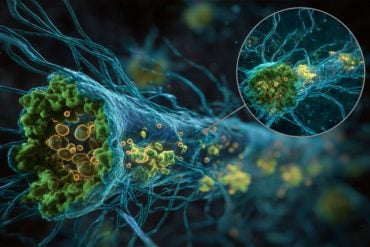Summary: We perceive the thickness of liquid food based on logarithmic stimuli, in a similar way to which we perceive visual or auditory information.
Source: University of Amsterdam
To be able to experience a wide range of impulses, our senses use “logarithmic perception”: A large increase in the impulse only leads to a small increase in what our brain perceives.
A group of researchers from the University of Amsterdam, Unilever, and Wageningen University & Research now shows that this effect does not only hold for our ears and eyes, but also for the perceived thickness of liquid foods.
Our capacities to appreciate the intensity of sound, light, or textures, are crucial for our interaction with the physical world around us. To allow us to experience a wide range of sound or light intensities, our senses soften the intensity of such stimuli when they are strong, and strengthen them when they are weak. However, the precise way in which the intensity of stimuli is related to their perceived strength is still a subject of debate among scientists.
Logarithmic perception
For sound, for example, we can hear very soft noises and resist very loud ones. What this boils down to mathematically is that the scale of perception is a so-called logarithmic scale. The research team has now shown that the perceived “thickness” of liquid food products also depends logarithmically on the stimulus, just like the perception we receive from our eyes and ears.

The physics of the way substances flow is called rheology. The researchers modeled the swallowing process and compared the rheology of various liquid bouillons to their subjective perception, obtained from tasting by a panel. In this way, they found that a product which was physically ten times thicker was only perceived as two times ‘thicker.”
The finding of a logarithmic relation confirms the so-called Weber-Fechner law in biosensing. Knowing how our mouths perceive the thickness of liquid foods will allow for a better prediction of the mouth feel of foods, and hence, targeted design of good and tasty food products.
About this sensory perception and neuroscience research news
Author: Press Office
Source: University of Amsterdam
Contact: Press Office – University of Amsterdam
Image: The image is in the public domain
Original Research: Open access.
“Predicting thickness perception of liquid food products from their non-Newtonian rheology” by Antoine Deblais et al. Nature Communications
Abstract
Predicting thickness perception of liquid food products from their non-Newtonian rheology
The “mouthfeel” of food products is a key factor in our perception of food quality and in our appreciation of food products.
Extensive research has been performed on what determines mouthfeel, and how it can be linked to laboratory measurements and eventually predicted. This was mainly done on the basis of simple models that do not accurately take the rheology of the food products into account.
Here, we show that the subjectively perceived “thickness” of liquid foods, or the force needed to make the sample flow or deform in the mouth, can be directly related to their non-Newtonian rheology.
Measuring the shear-thinning rheology and modeling the squeeze flow between the tongue and the palate in the oral cavity allows to predict how a panel perceives soup “thickness”. This is done for various liquid bouillons with viscosities ranging from that of water to low-viscous soups and for high-viscous xanthan gum solutions.
Our findings show that our tongues, just like our eyes and ears, are logarithmic measuring instruments in agreement with the Weber-Fechner law that predicts a logarithmic relation between stimulus amplitude and perceived strength. Our results pave the way for more accurate prediction of mouthfeel characteristics of liquid food products.






